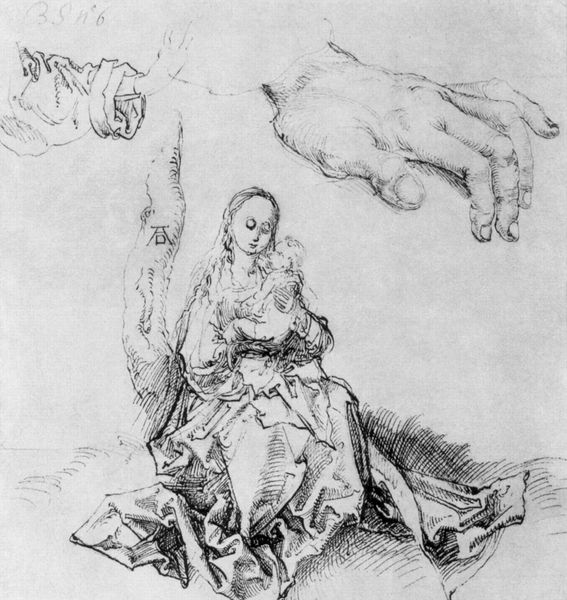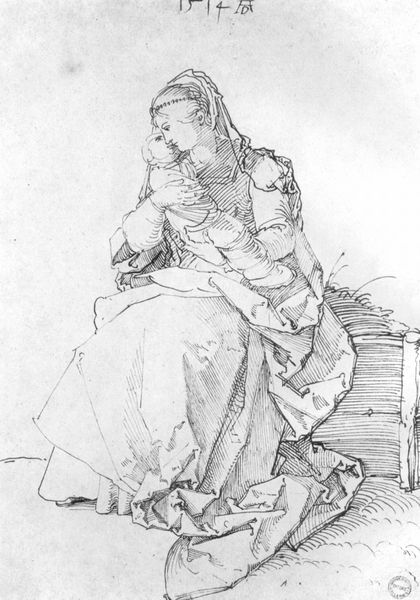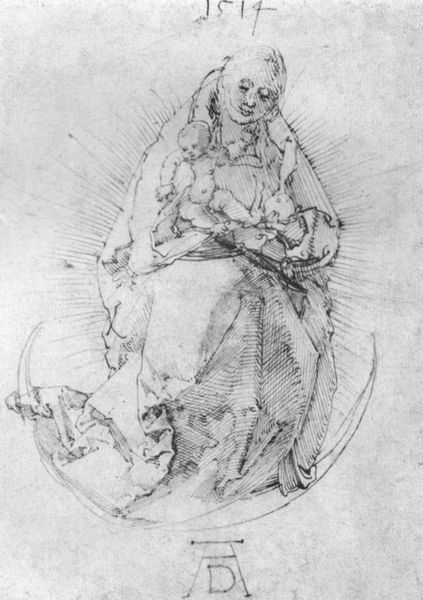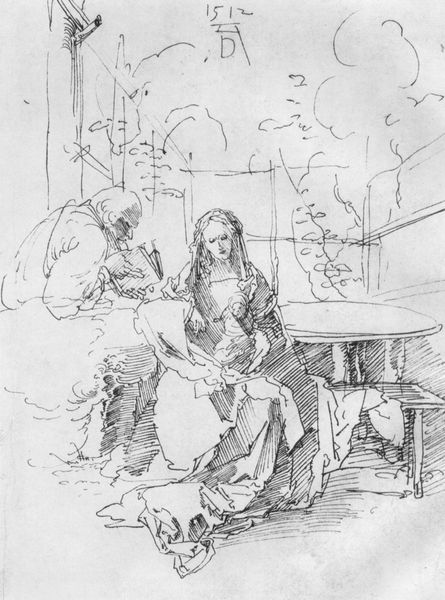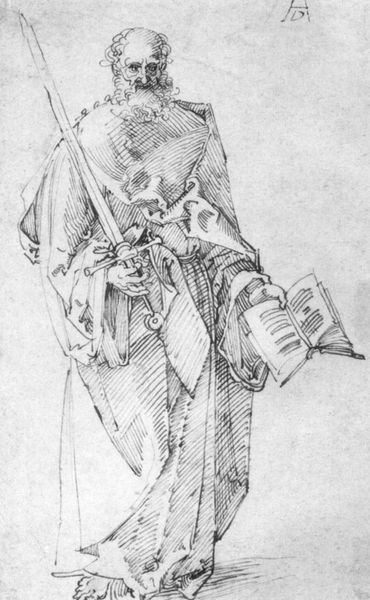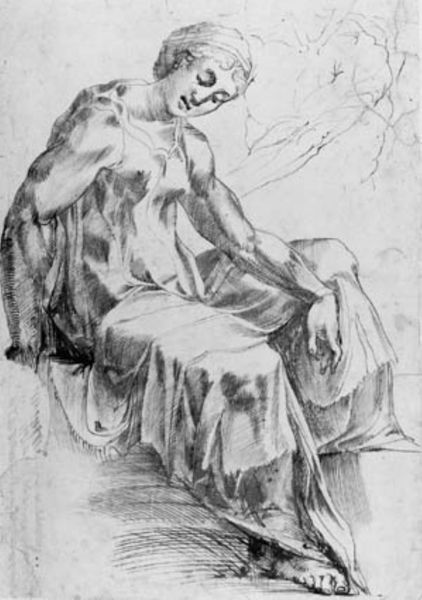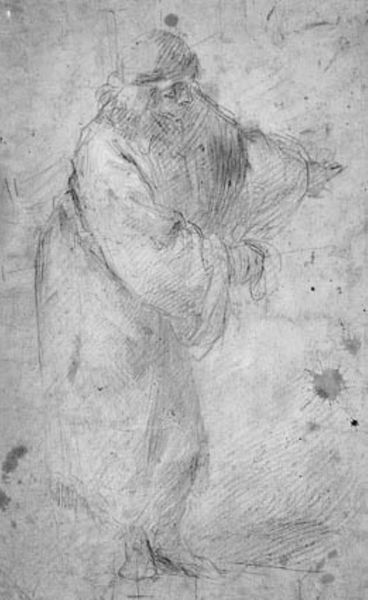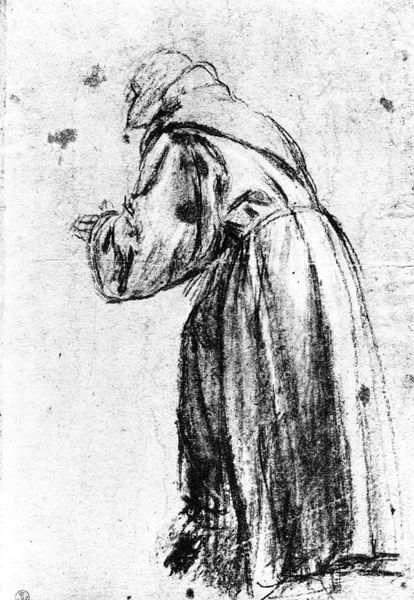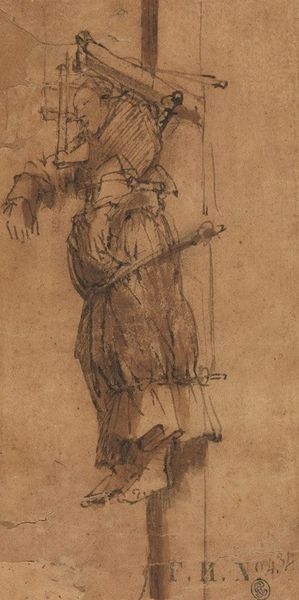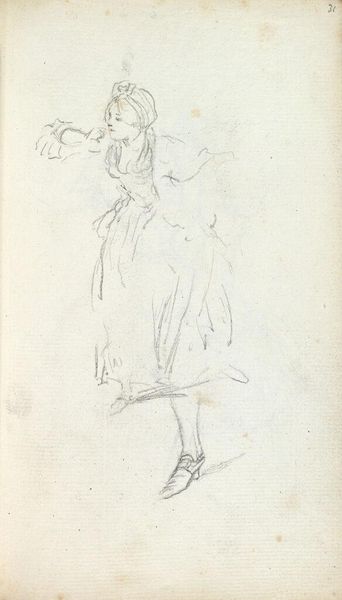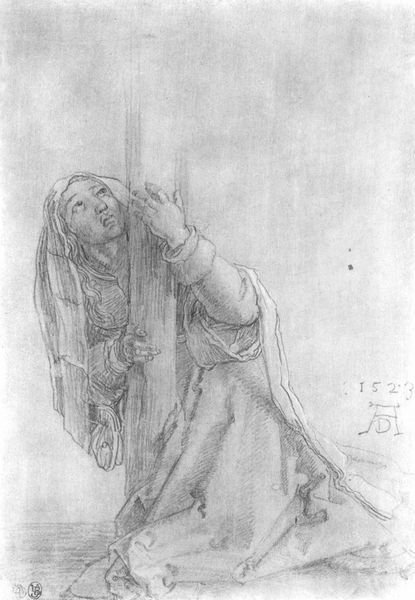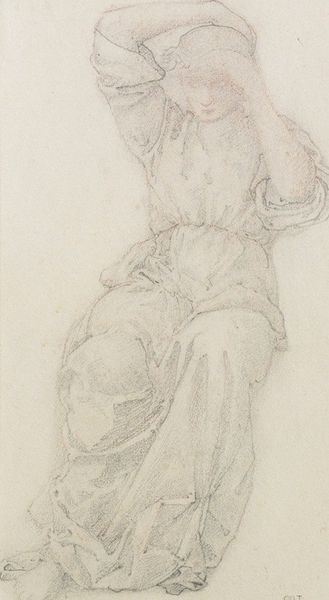
drawing, pencil
#
portrait
#
drawing
#
pencil sketch
#
figuration
#
form
#
11_renaissance
#
child
#
group-portraits
#
pencil
#
line
#
northern-renaissance
Copyright: Public domain
Editor: We’re looking at "Madonna and Child," a pencil drawing, presumably by Albrecht Durer, although it is undated. It looks very delicate, almost unfinished, and it focuses primarily on line work. What stands out to you most in this drawing? Curator: Immediately, I see a complex layering of lines, indicative of Durer’s deep engagement with the materiality of drawing. This wasn’t just about representation; it was about exploring the potential of pencil on paper. What paper was he using? Was it handmade? Did it affect the ink saturation? Consider the labor involved: from manufacturing the pencil to the artist's hand meticulously layering each stroke. These aren't just lines, but traces of material processes. Editor: I see what you mean about the layering of lines. It's almost like he's building the forms rather than just outlining them. But how does this relate to the social context? Curator: Think about the patronage system of the Renaissance. Durer, although celebrated, still relied on commissions. Religious imagery was a hot commodity. This drawing, although seemingly simple, reveals the complex intersection of religious belief, artistic labor, and market demand. Was this a study for a larger work, or a piece meant for private devotion? Knowing the context informs our understanding of its production. Editor: That makes sense. I never really thought about the materials as being tied to the economy of art making. Curator: Exactly. Even something as seemingly basic as a pencil and paper represents a web of production and consumption. What do you make of the relatively ‘unfinished’ state of the piece? Editor: Perhaps it was never intended to be a finished product. It seems like the medium is almost the message, a showcase of skill more than a devotional image in itself. Curator: Precisely. This drawing prompts us to consider art not just as a representation of something, but as a product of specific material and social conditions. Editor: Thanks. Now, when I see it again, I won't just focus on what's depicted but also on the choices of materials and methods and what that means about the historical moment.
Comments
No comments
Be the first to comment and join the conversation on the ultimate creative platform.
